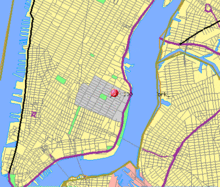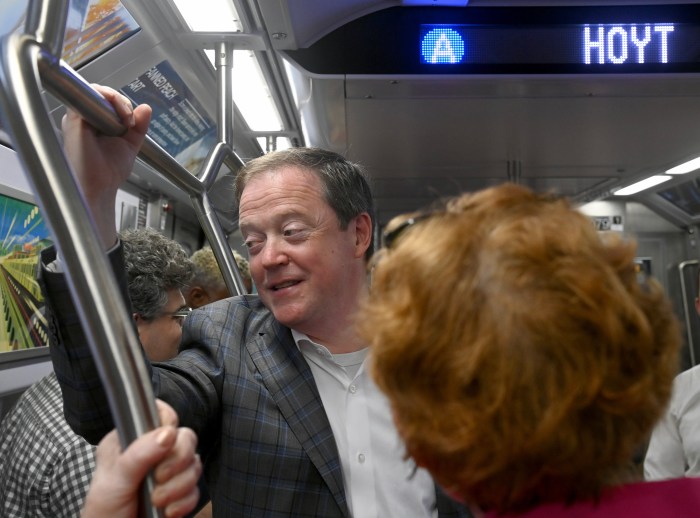The approval of the East Village/Lower East Side Historic District on Tuesday comes as wonderful news. And it’s long overdue. As opposed to surrounding neighborhoods like Greenwich Village and Soho, which sport well-established, substantial-sized historic districts, the East Village has been sorely underserved in this area — underlandmarked.
This Landmarks Preservation Commission designation — which takes immediate effect — helps address that imbalance. Three hundred thirty 19th- and early-20th-century buildings between the Bowery and Avenue A, St. Mark’s Place and Second St. now enjoy landmark protections.
Previously, the East Village only had two small historic districts and several individual landmarks.
The new historic district includes a number of sites that preservationists fought hard to have included, notably several houses of worship: Congregation Mezritch Synagogue, at 415 E. Sixth St., the East Village’s last remaining tenement synagogue, which came very close to demolition in 2008; the Russian Orthodox Cathedral, at 59 E. Second St., for which plans had been filed to build a condo tower vertical addition; and Community Synagogue, at 323 E. Sixth St., built in 1847 as the Evangelical Lutheran Church of St. Matthew, from which many of the victims of the General Slocum excursion boat disaster came.
Local churches and synagogues, in turn, fought the designation, feeling it would hurt them financially and also force them to climb through bureaucratic red tape every time they have to do something to their building facades. However, there’s no question that these beautiful houses of worship add immensely to the fabric of the historic district — and to the East Village.
The effort to create an East Village Historic District initiated a couple of years ago with L.P.C., which was clearly responding to a growing chorus of cries that the neighbor-hood was under land marked. The East Village Community Coalition had surprisingly succeeded in landmarking the old P.S. 64 (CHARAS/El Bohio Cultural and Community Center) on E. Ninth St. — even after it had been purchased by developer Gregg Singer — and there was a rising awareness of how vulnerable the East Village’s historic buildings were.
Thanks are also definitely due to the Greenwich Village Society for Historic Preservation, which worked closely with E.V.C.C. and the community to raise awareness about landmarking — and which then championed the historic district, which ultimately was passed with only minor modifications from the original proposed boundaries.
The East Village and Lower East Side had been rezoned a few years before the landmarking push began, adding height caps for new construction, eliminating air-rights transfers and removing community facility bonuses. While the rezoning curbed out-of-proportion development, it didn’t protect historic buildings from demolition — which is what the Landmarks designation now does. Basically, it was a one-two punch to protect the neighborhood.
Yes, some religious institutions are concerned. But landmarking is proven to add value to property, and these buildings really do belong in the district. Ultimately, these houses of worship will benefit from this designation, just as the rest of the 330 buildings in the district surely will.
It’s important to note that tax breaks are available for pri- vately owned buildings in historic districts, and grants and loans for nonprofit groups and religious institutions. There is even a hardship law that allows landlords to get out of requirements if it’s shown they can’t afford them, and which permits houses of worship to avoid them if it hinders their mission.
Over all, the approval of the East Village/Lower East Side Historic District is a win-win and, again, was seriously overdue. Hopefully, we’ll soon be writing about the expan- sion of this historic district.


















